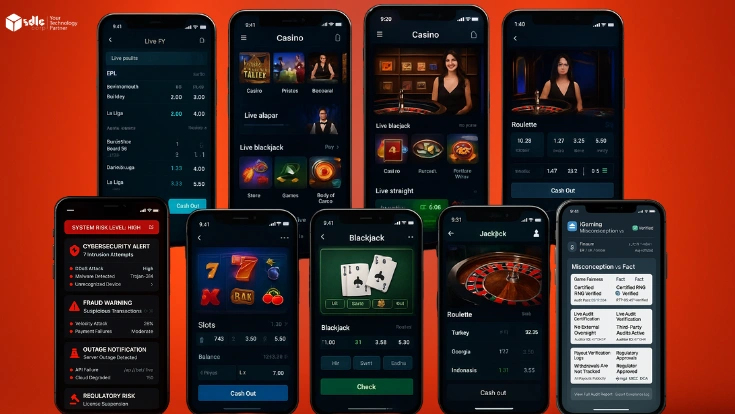Introduction: A New Era in Gaming
Video games have always been a source of joy, challenge, and community for millions across the globe. Yet, for too long, many players with disabilities found themselves on the sidelines, unable to fully engage in this beloved pastime. But that’s changing—fast. The gaming industry, particularly in the realm of console game development, is undergoing a seismic shift, with a growing focus on accessibility. This means making sure that every player, regardless of physical or cognitive ability, can dive into the excitement of gaming. And it’s not just about small tweaks or adjustments; it’s a whole new way of thinking about game design and hardware.
But why is this so crucial? Imagine a world where a love for gaming is met with frustration because the hardware or software isn’t designed for you. For many with disabilities, this has been the reality for years. Fortunately, console games are now breaking down these barriers, making huge strides toward inclusivity. Console game development companies, alongside major industry players, are taking the lead in developing systems that accommodate all gamers. By working closely with game development companies to incorporate accessibility from the start, the industry is ensuring a more inclusive experience for everyone. In this article, we’ll explore the key innovations shaping this transformation, the challenges that remain, and what the future might hold for accessible console gaming.
Dive Into Gaming's Epic Journey!
Our team of expert is on hand to assist you
Why Accessibility in Gaming Matters
Groundbreaking Hardware: The Foundation for Change
Microsoft’s Xbox Adaptive Controller (XAC)
Sony and Nintendo’s Efforts
While Microsoft has set a high bar, other major players are also stepping up. Sony, for instance, has made strides with its PlayStation consoles. The DualSense controller for the PlayStation 5 features adaptive triggers and haptic feedback, providing a more tactile experience. For gamers with disabilities, these features can be customized or even turned off entirely, ensuring that the controller remains usable regardless of a player’s abilities.
Nintendo, on the other hand, has taken a slightly different approach. Their Switch Joy-Con controllers offer flexibility in terms of how they’re held and used. Lightweight, detachable, and easy to configure, they can be used in several ways, making them more accessible for players who may struggle with a traditional controller.
These advancements are not just the result of internal innovation. Increasingly, console game development services and console development experts are consulting with hardware manufacturers, providing crucial insight into the needs of players with disabilities. As the collaboration between these sectors deepens, it’s likely we’ll see even more user-friendly hardware across various game consoles.

In-Game Accessibility: Where Games Truly Shine
Of course, hardware alone won’t solve the issue. The games themselves must also be designed with accessibility in mind. And here’s where things get even more exciting. More and more developers are starting to implement features that make games not just playable—but enjoyable—for players with disabilities.
Customizable Controls
A core aspect of accessibility in gaming is control customization. Think about it: every game has a unique control scheme. But what happens when those default controls don’t work for everyone? That’s where customization comes in. Customizable controls allow players to remap buttons and adjust the layout to suit their needs. This is a simple yet transformative feature, and console game development companies are leading the way in its implementation.
Take “The Last of Us Part II,” a game that pushed boundaries in every sense—including accessibility. The game offers an extensive array of options for players with disabilities, including full control remapping, which means players can change every button to their liking. For players with motor disabilities, this kind of flexibility can mean the difference between playing the game or giving up in frustration.
Visual and Auditory Accessibility
Then, we have visual and auditory accessibility features, which have become more sophisticated in recent years. Subtitles, adjustable font sizes, and colorblind modes are no longer rare extras; they’re becoming the norm. But it doesn’t stop there.
In “The Last of Us Part II,” there’s even a screen reader function that narrates menus for players with visual impairments. Add to that high-contrast display modes and large, customizable subtitles, and you have a game that’s paving the way for accessible design. But perhaps most impressively, the game offers directional audio cues—a feature that allows players with hearing impairments to navigate the world using sound cues as guides.
Cognitive Accessibility
Gaming isn’t just about quick reflexes or sharp vision. Cognitive disabilities—such as difficulty with memory, attention, or problem-solving—can also impact the gaming experience. Developers are now taking this into account, offering features that make games less overwhelming for players with cognitive challenges.
Take “Celeste,” an indie platformer beloved for its difficulty and engaging story. The game offers an “assist mode,” allowing players to adjust the game’s speed, invincibility, or difficulty at any point. This flexibility ensures that players who may struggle with the game’s more challenging aspects can still experience its emotional and narrative depth.
Similarly, “Assassin’s Creed Valhalla” allows players to fine-tune combat and exploration settings, offering a smoother experience for those who may find the default difficulty levels too overwhelming. These are just a few examples of how game development companies are integrating accessibility into game design, and this trend is only growing stronger as more game dev companies commit to inclusivity.
Play the Best, Know the Rest!
Our team of expert is on hand to assist you

The Role of Haptic Feedback
Haptic feedback is another exciting development, particularly for players with sensory impairments. The PlayStation 5’s DualSense controller has been lauded for its advanced haptics, which add a new layer of immersion. But this tech isn’t just about immersion—it can also aid accessibility.
For example, in “Spider-Man: Miles Morales,” players can “feel” the tension in the web-swinging mechanic through the controller’s adaptive triggers. For players with hearing impairments, this kind of feedback can provide important cues that would otherwise be conveyed through sound alone.
Collaboration and Advocacy: The Push for Change
None of these advancements would be possible without the close collaboration between game developers, advocacy groups, and the gamers themselves. Organizations like AbleGamers and SpecialEffect are working tirelessly to bridge the gap between the gaming industry and the disability community.
These organizations aren’t just passive observers—they’re actively involved in game development. By consulting with developers, providing feedback, and advocating for more inclusive design, they’re helping to shape the future of accessible gaming. Many console video game development services now work directly with such groups to ensure their products are built with accessibility from the ground up.
Challenges Ahead
Of course, there’s still a long way to go. Not every game or console is as accessible as it could be. And while we’ve seen significant strides, many players with disabilities are still left out of the gaming experience. One major hurdle is cost. Devices like the Xbox Adaptive Controller, while groundbreaking, can be expensive when paired with additional accessories like switches or joysticks. This can make gaming prohibitively expensive for some.
Then, there’s the issue of consistency. Not all developers have the resources to implement robust accessibility features, particularly indie studios working with smaller budgets. The challenge here is ensuring that accessibility isn’t just a feature in big-budget AAA titles but becomes a standard across the entire industry.
The Future of Accessible Gaming
Despite these challenges, the future of accessible gaming looks bright. More developers are making accessibility a priority, not as an afterthought but as an integral part of the design process. Events like Global Accessibility Awareness Day (GAAD) are shining a spotlight on the importance of inclusive game design, and we’re likely to see even more innovations in the years to come. As more console video game development agencies and experts focus on building inclusive environments, console gaming is on the path toward becoming a more welcoming space for all players.
Hire Console Game Developer's
Our team of expert is on hand to assist you

Conclusion
In conclusion, the gaming industry is making significant strides in improving accessibility, especially through console game development. From adaptive controllers to customizable in-game features, these innovations are breaking down barriers for players with disabilities.
While challenges remain, game development companies are leading the way toward a more inclusive future. As more console video game development services prioritize accessibility, the gaming world is becoming a place where everyone, regardless of ability, can participate and enjoy fully. The future of accessible gaming is bright, with consoles becoming more inclusive for all players.

















